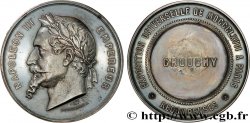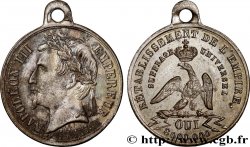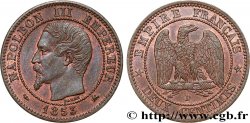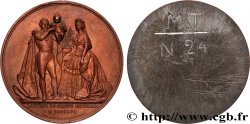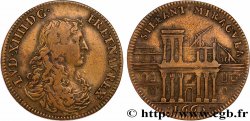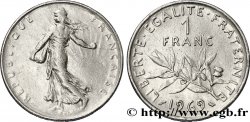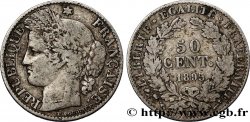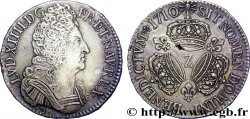E-auction 340-255096 - fme_369634 - SECOND EMPIRE Médaille, Fondation de l’Hôtel de Ville de Poitiers
Чтобы принять участие в торгах, вы должны войти в систему и стать подтвержденным участником аукциона. Войдите, чтобы сделать ставку. Ваш аккаунт будет подтвержден в течение 48 часов. Не ждите до закрытия торгов, чтобы зарегистрироваться.Сделав ставку на данный товар, вы вступаете в юридическое соглашение на покупку выбранного товара и нажатием кнопки «Сделать ставку» подтверждаете принятие вами условий интернет-аукционов cgb.fr.
Ставка может бить сделана только в полном эквиваленте евро. Торги закроются согласно времени, указанному в описании товара, все ставки, сделанные после закрытия торгов, учитываться не будут. Не следует откладывать предложение вашей ставки до последнего момента, так как система может не успеть обработать вашу заявку, и ваша ставка не будет принята. Более детальную информацию вы найдёте здесь: FAQ по интернет-аукционам.
БЕСПЛАТНО.
БЕСПЛАТНО.
| Оценить : | 75 € |
| Цена : | 29 € |
| Максимальная предлагаемая цена : | 33 € |
| Конец торгов : | 21 October 2019 18:31:00 |
| Участников : | 5 Участников |
Тип Médaille, Fondation de l’Hôtel de Ville de Poitiers
Дата: 1869
Монетный двор / Город: 86 - Poitiers
Металл: copper
Диаметр: 50,5 mm
Ориентация осей монеты: 12 h.
Гравер CAQUÉ Armand Auguste (1795-1881)
Вес: 54,94 g.
Век: lisse + abeille CUIVRE
Пуансон: Abeille (1860 - 1880) CUIVRE
Комментарии о состоянии
Exemplaire nettoyé. Présence de coups et rayures
Лицевая сторона
Аверс: легенда: HÔTEL DE VILLE DE POITIERS / 1869.
Аверс: описание: Vue de l’Hôtel de Ville de Poitiers, signé : CAQUE F. et G. GUERINOT ARCH..
Обратная сторона
Реверс: легенда: SOUS LE RÈGNE DE NAPOLÉON III / EMPEREUR DES FRANÇAIS / M. BOURREAU MINISTRE DE L’INSTRUCTION PUBLIQUE / ANCIEN MAIRE DE POITIERS / ASSISTÉ DE M. M. / RENEUFVE PRÉFET DU DÉPARTEMENT DE LA VIENNE / LEPETIT ET AUTELIET ADJOINTS / ET DES MEMBRES DU CONSEIL MUNICIPAL / A POSÉ LA PREMIÈRE PIERRE / DE L’HÔTEL DE VILLE DE POITIERS / LE 31 OCTOBRE 1869 / G. GUÉRINOT ARCHITECTE.
Реверс: Описание: Légende en douze lignes soue un petit écu couronné de la ville de Poitiers,entre deux branches de chêne et de lauriers.
Комментарий
L’hôtel de ville de Poitiers, classé aux Monuments Historiques, témoigne des projets d’aménagements urbains de la fin du XIXe siècle. S’inspirant des constructions municipales parisiennes de l’époque, de style Second Empire, il est bâti entre 1869 et 1875 sous la direction de l’architecte Antoine-Gaétan Guérinot qui avait collaboré à l’édification de la Préfecture de la ville. Les deux bâtiments dans l’axe, l’un de l’autre de part et d’autre de la rue Victor Hugo, se regardent, signe de la structuration des institutions de la République. Bien que typique des édifices de cette époque, l’hôtel de ville de Poitiers n’en demeure pas moins une œuvre remarquable, notamment par sa décoration intérieure qui s’est poursuivie jusque dans les années 1890.
Cf. http://www.architectureetpatrimoine.com/monuments/hotel-de-ville-de-poitiers/.
Poitiers City Hall, listed as a Historic Monument, bears witness to the urban development projects of the late 19th century. Inspired by the Parisian municipal buildings of the time, in the Second Empire style, it was built between 1869 and 1875 under the direction of the architect Antoine-Gaétan Guérinot, who had collaborated on the construction of the city's Prefecture. The two buildings in the axis, one of the other on either side of Rue Victor Hugo, face each other, a sign of the structuring of the institutions of the Republic. Although typical of buildings of this period, Poitiers City Hall is nonetheless a remarkable work, particularly for its interior decoration, which continued until the 1890s. See http://www.architectureetpatrimoine.com/monuments/hotel-de-ville-de-poitiers/
Cf. http://www.architectureetpatrimoine.com/monuments/hotel-de-ville-de-poitiers/.
Poitiers City Hall, listed as a Historic Monument, bears witness to the urban development projects of the late 19th century. Inspired by the Parisian municipal buildings of the time, in the Second Empire style, it was built between 1869 and 1875 under the direction of the architect Antoine-Gaétan Guérinot, who had collaborated on the construction of the city's Prefecture. The two buildings in the axis, one of the other on either side of Rue Victor Hugo, face each other, a sign of the structuring of the institutions of the Republic. Although typical of buildings of this period, Poitiers City Hall is nonetheless a remarkable work, particularly for its interior decoration, which continued until the 1890s. See http://www.architectureetpatrimoine.com/monuments/hotel-de-ville-de-poitiers/







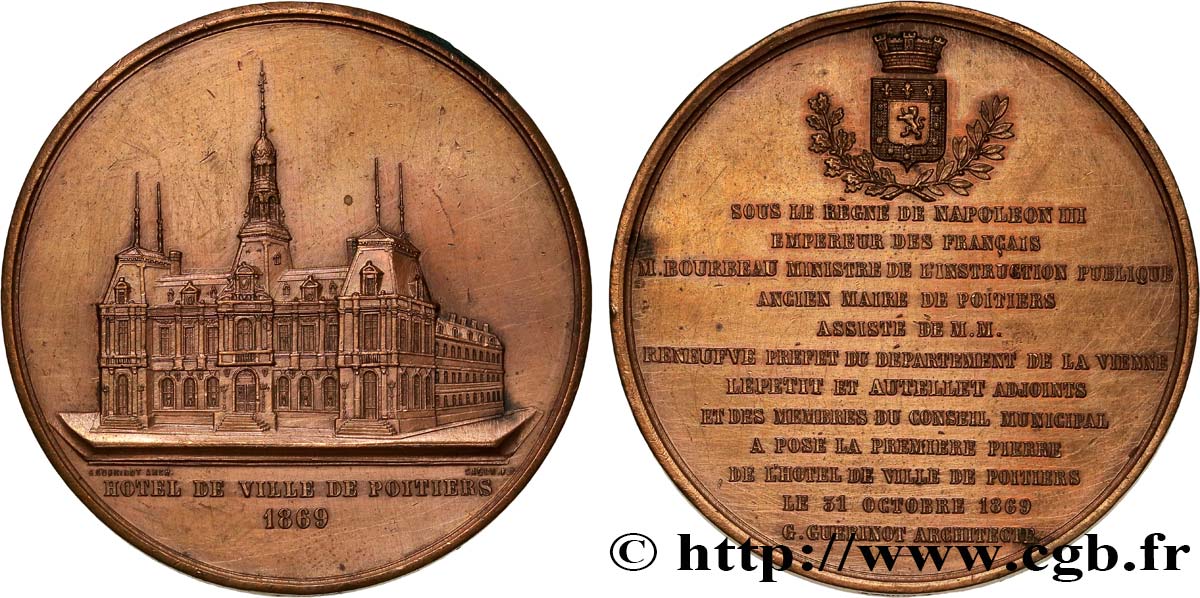
 Cообщить об ошибке
Cообщить об ошибке Распечатать страницу
Распечатать страницу Отправить мой выбор
Отправить мой выбор Задать вопрос
Задать вопрос Consign / sell
Consign / sell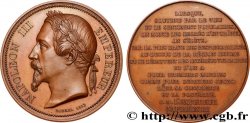
 Информация
Информация